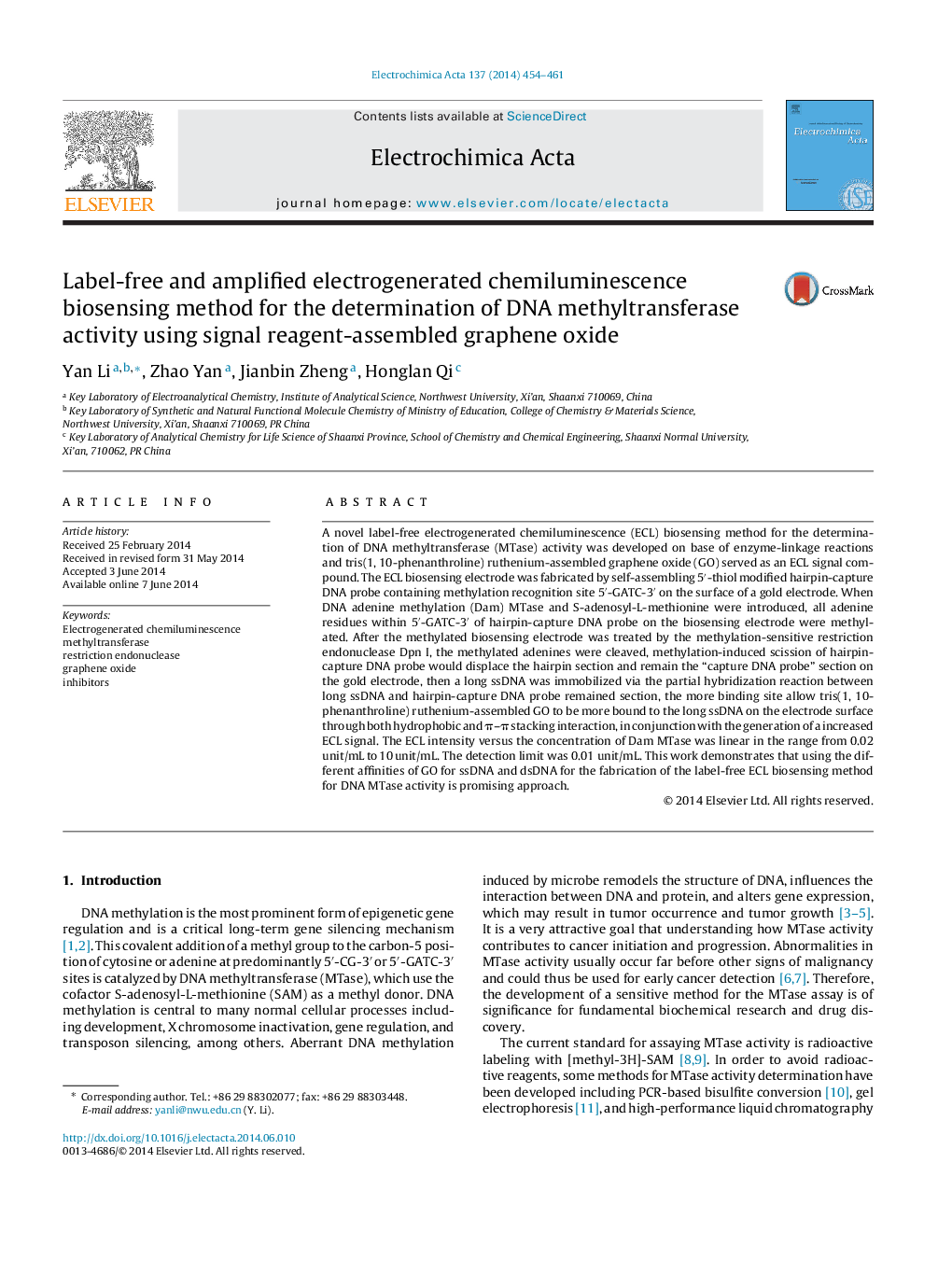| Article ID | Journal | Published Year | Pages | File Type |
|---|---|---|---|---|
| 185596 | Electrochimica Acta | 2014 | 8 Pages |
•Label-free ECL biosensing method for DNA MTase was developed.•The ECL biosensing method is based on Ru(phen)32+-assembled graphene oxide served as an ECL signal compound.•The biosensing method showed high sensitivity.
A novel label-free electrogenerated chemiluminescence (ECL) biosensing method for the determination of DNA methyltransferase (MTase) activity was developed on base of enzyme-linkage reactions and tris(1, 10-phenanthroline) ruthenium-assembled graphene oxide (GO) served as an ECL signal compound. The ECL biosensing electrode was fabricated by self-assembling 5′-thiol modified hairpin-capture DNA probe containing methylation recognition site 5′-GATC-3′ on the surface of a gold electrode. When DNA adenine methylation (Dam) MTase and S-adenosyl-L-methionine were introduced, all adenine residues within 5′-GATC-3′ of hairpin-capture DNA probe on the biosensing electrode were methylated. After the methylated biosensing electrode was treated by the methylation-sensitive restriction endonuclease Dpn I, the methylated adenines were cleaved, methylation-induced scission of hairpin-capture DNA probe would displace the hairpin section and remain the “capture DNA probe” section on the gold electrode, then a long ssDNA was immobilized via the partial hybridization reaction between long ssDNA and hairpin-capture DNA probe remained section, the more binding site allow tris(1, 10-phenanthroline) ruthenium-assembled GO to be more bound to the long ssDNA on the electrode surface through both hydrophobic and π–π stacking interaction, in conjunction with the generation of a increased ECL signal. The ECL intensity versus the concentration of Dam MTase was linear in the range from 0.02 unit/mL to 10 unit/mL. The detection limit was 0.01 unit/mL. This work demonstrates that using the different affinities of GO for ssDNA and dsDNA for the fabrication of the label-free ECL biosensing method for DNA MTase activity is promising approach.
